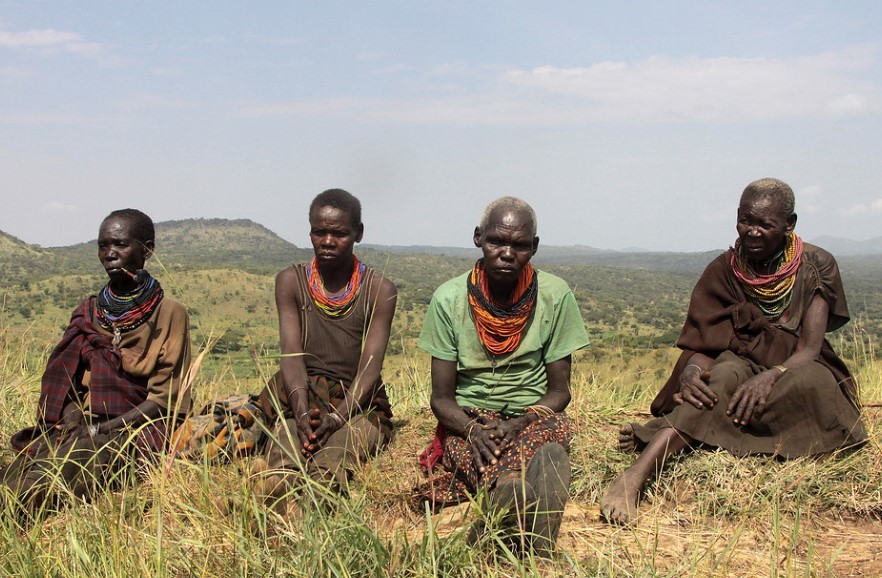The Ik Tribe of Karamoja: A Glimpse into a Unique Culture – Nestled within the rugged terrain of Karamoja, a region in northeastern Uganda, resides a remarkable and resilient community known as the Ik Tribe. With a population of approximately 10,000 people, the Ik Tribe has long captured the attention of anthropologists, researchers, and travelers alike due to their distinctive way of life, language, and cultural practices.
This isolated and enigmatic tribe offers a fascinating window into the complexities of human adaptation and survival in one of Africa’s most challenging landscapes.
Geographically, Karamoja is characterized by its harsh, arid climate and towering mountains, creating an environment that demands a tenacious spirit for survival. The Ik Tribe has not only survived but thrived in this unforgiving terrain for generations. Their settlement patterns reflect a deep understanding of the land and its resources.
Traditionally, the Ik people were hunter-gatherers, but over time, they transitioned to subsistence farming, cultivating crops like sorghum, millet, and maize. This shift speaks volumes about their ability to adapt to changing circumstances while maintaining a connection to their ancestral practices.
One of the most distinctive features of the Ik Tribe is their language. The Ik language is a member of the Kuliak family of Nilotic languages, and it is characterized by its unique linguistic features. It has been a subject of linguistic study, providing insights into the evolution and diversification of languages in the region.

Language is not merely a tool for communication but a vessel that carries the collective wisdom, traditions, and worldview of a community. The preservation of the Ik language underscores the tribe’s resilience and cultural identity.
Social structures within the Ik Tribe are equally intriguing. Their society is organized into small, autonomous family units, and each family lives in its own homestead, often perched on the hillsides for defense and visibility.
This decentralized structure is a pragmatic response to the scarcity of resources in the region. It ensures that each family can effectively manage its own agricultural plots and livestock without overburdening the land. While individual autonomy is valued, a strong sense of communalism persists, and families frequently engage in reciprocal labor exchange during planting and harvesting seasons.
One aspect that has attracted attention—and sometimes controversy—is the Ik Tribe’s unique survival strategies, which have occasionally been misinterpreted as extreme individualism. Historically, the Ik people have faced periods of food scarcity, leading to behaviors that outsiders have often misunderstood.
During times of shortage, the elderly and infirm are sometimes left to fend for themselves, giving rise to misconceptions about the tribe’s values. In reality, these practices are rooted in the harsh realities of survival in a resource-scarce environment, where tough decisions are sometimes necessary for the greater good of the community.
As the world around them has evolved, the Ik Tribe has encountered external influences that have brought both opportunities and challenges. Increased contact with neighboring tribes, government interventions, and the encroachment of modernity have all impacted their way of life.
Educational initiatives have been introduced to the community, offering a chance for the younger generation to gain literacy skills and exposure to the broader world. However, this has also led to concerns about the erosion of traditional knowledge and practices.
In recent years, efforts have been made to support the Ik Tribe in preserving their cultural heritage while also fostering sustainable development. Non-governmental organizations and researchers have collaborated with the community to address pressing issues such as healthcare, education, and livelihood diversification.
By engaging the Ik people in participatory projects, these initiatives aim to empower them to make informed decisions about their future while honoring their unique cultural identity.
In conclusion, the Ik Tribe of Karamoja stands as a testament to the incredible adaptability and resilience of human communities. Their way of life, language, and survival strategies offer a captivating glimpse into the intricate interplay between culture and environment.
As the world continues to change, the Ik Tribe’s story serves as a reminder of the importance of preserving diverse cultural traditions and finding innovative ways to ensure the well-being of marginalized communities while respecting their autonomy and agency.


Comment (0)